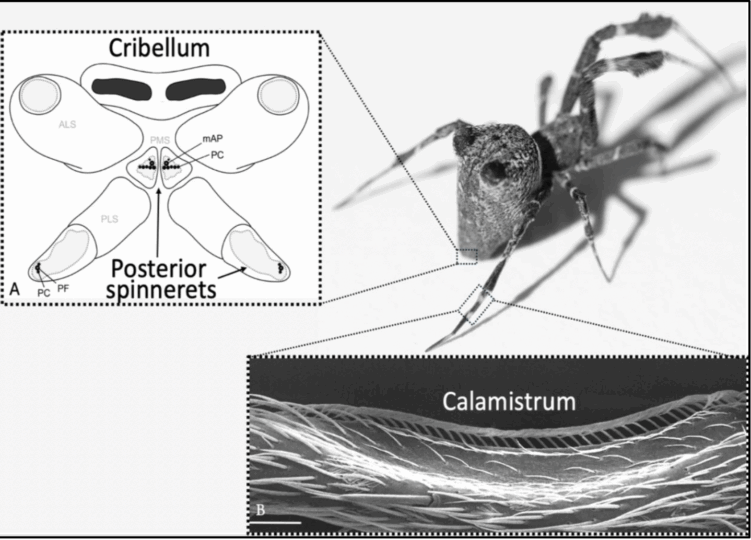
The Genetic Basis and Evolution of Spider Silk-Spinning Organs
My research explores how complex traits evolve and disappear, focusing on the unique silk-spinning organs of cribellate spiders. These spiders produce dry, nanofibrous silk using two specialized structures: the cribellum, a spinning plate that releases thousands of fine threads, and the calamistrum, a comb-like structure that shapes them into highly adhesive capture threads.
Together, these organs form what I call the cribellate trait complex (CTC), a fascinating example of functional and developmental integration across body parts. Yet, despite its evolutionary success, this system has been lost repeatedly across spider lineages.
To uncover the genetic basis and evolutionary history of the CTC, I combine transcriptomics and comparative genomics. Using the garden center spider, Uloborus plumipes, as a model, I identify the genes involved in the development and regulation of the calamistrum and cribellum. I then trace how these genes evolved and were lost across spider lineages with and without cribellate silk.
This work aims to reveal how coordinated traits arise, persist, or vanish, offering new insights into the evolution of complex morphologies and the genomic mechanisms driving biodiversity.
